Metabolic Footprints of Burkholderia Sensu Lato Rhizosphere Bacteria Active against Maize Fusarium Pathogens
- PMID: 34683382
- PMCID: PMC8538949
- DOI: 10.3390/microorganisms9102061
Metabolic Footprints of Burkholderia Sensu Lato Rhizosphere Bacteria Active against Maize Fusarium Pathogens
Abstract
Consistent with their reported abundance in soils, several Burkholderia sensu lato strains were isolated from the rhizosphere of maize plants cultivated at different sites in central México. Comparative analysis of their 16S rRNA gene sequences permitted their separation into three distinctive clades, which were further subdivided into six other clusters by their close resemblance to (1) Trinickia dinghuensis; (2) Paraburkholderia kirstenboschensis, P. graminis, P. dilworthii and P. rhynchosiae; (3) B. gladioli; (4) B. arboris; (5) B. contaminans, or (6) B. metallica representative species. Direct confrontation assays revealed that these strains inhibited the growth of pathogenic Fusarium oxysporum f. sp. radicis-lycopersici, and F. verticillioides within a roughly 3-55% inhibition range. The use of a DIESI-based non-targeted mass spectroscopy experimental strategy further indicated that this method is an option for rapid determination of the pathogen inhibitory capacity of Burkholderia sensu lato strains based solely on the analysis of their exometabolome. Furthermore, it showed that the highest anti-fungal activity observed in B. contaminans and B. arboris was associated with a distinctive abundance of certain m/z ions, some of which were identified as components of the ornbactin and pyochelin siderophores. These results highlight the chemical diversity of Burkholderia sensu lato bacteria and suggest that their capacity to inhibit the Fusarium-related infection of maize in suppressive soils is associated with siderophore synthesis.
Keywords: Burkholderia; DIESI-MS; Fusarium; Paraburkholderia; biocontrol; siderophores.
Conflict of interest statement
The authors declare no conflict of interest.
Figures
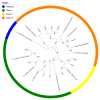
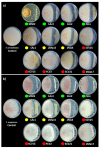
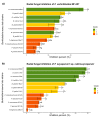
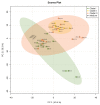
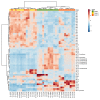

References
-
- Leyva-Madrigal K.Y., Larralde-Corona C.P., Apodaca-Sánchez M.A., Quiroz-Figueroa F.R., Mexia-Bolaños P.A., Portillo-Valenzuela S., Ordaz-Ochoa J., Maldonado-Mendoza I.E. Fusarium species from the Fusarium fujikuroi species complex involved in mixed infections of maize in Northern Sinaloa, Mexico. J. Phytopathol. 2015;163:486–497. doi: 10.1111/jph.12346. - DOI
-
- Reyes-Velázquez W.P., Figueroa-Gómez R.M., Barberis M., Reynoso M.M., Rojo F.G.A., Chulze S.N., Torres A.M. Fusarium species (section Liseola) occurrence and natural incidence of beauvericin, fusaproliferin and fumonisins in maize hybrids harvested in Mexico. Mycotoxin. Res. 2011;27:187–194. doi: 10.1007/s12550-011-0095-6. - DOI - PubMed
-
- González-Huerta A., Vázquez-García L.M., Sahagún-Castellanos J., Rodríguez-Pérez J.E., Pérez-López D.J. Rendimiento del maíz de temporal y su relación con la pudrición de la mazorca. Agric. Tec. Mex. 2007;33:33–42.
Grants and funding
LinkOut - more resources
Full Text Sources
Molecular Biology Databases

